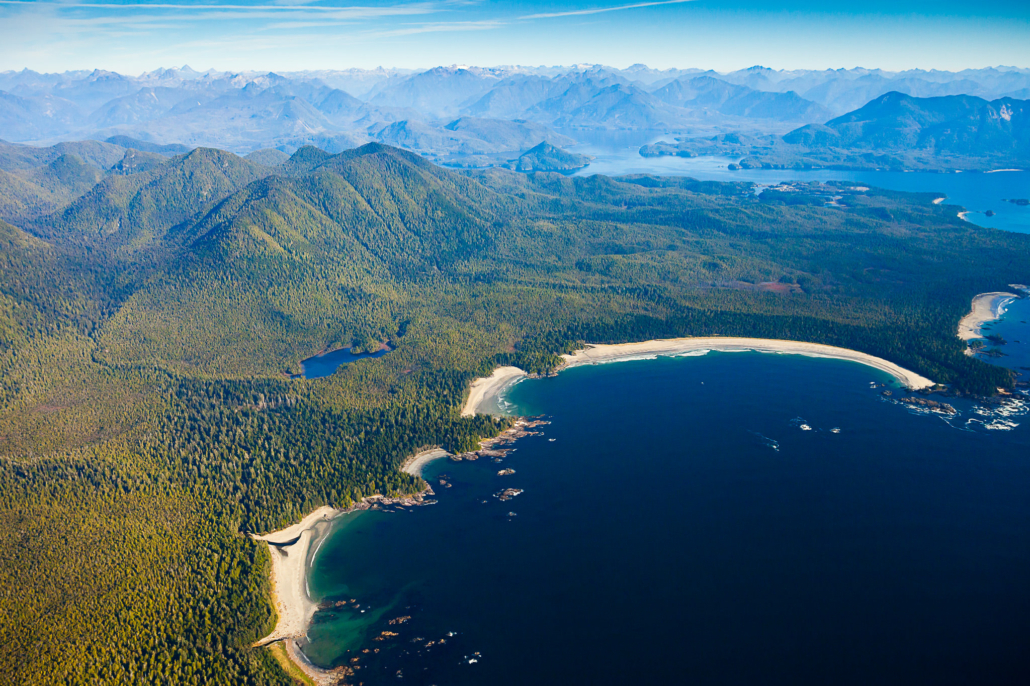 Jul 31 2023
Jul 31 2023BC big tree hunter documents grandest old-growth tree he’s ever seen
July 29, 2023
CBC News
By Chad Pawson
TJ Watt says Western red cedar near Tofino is a 46-metre-tall leviathan of a biodiverse ecosystem.
For 20 years, Victoria’s TJ Watt, 39, has trekked through the province’s vast and verdant landscape seeking out giant, old trees to document them and make a case for their conservation.
Now, at a time when exceptionally large trees have dwindled due to logging, he’s recorded what he calls the tree of his lifetime.
“No tree has blown me away more than this one,” he said. “It literally is a wall of wood.”
Watt photographed the tree, a Western red cedar, in 2022 on Flores Island in fabled Clayoquot Sound on Ahousaht First Nations territory while on a field trip as a National Geographic and Royal Canadian Geographical Society explorer. (The species is also spelled redcedar because it’s not deemed to be a true cedar.)
It’s estimated to be 46 metres tall and five metres wide at its base. The old-growth tree, part of forests that store carbon and support many species of plants and animals, is estimated to be at least 1,000 years old, according to Watt.
Its dimensions put it at the very top of the biggest and oldest trees in the province and across Canada.
“Unlike most other trees, it actually gets wider as it goes up,” said Watt. “It’s really the highlight of my life to come across something this spectacular.”
Watt and the Ahousaht First Nation have now revealed images and details of the tree to the public — although keeping its location secret — to show it as an example of the importance of the province meeting commitments to overhaul forestry to balance harvesting with ecological values.
“It’s representative of a healthy, intact, coastal, temperate ecosystem,” said Tyson Atleo, 36, a hereditary representative of the Ahousaht First Nation. “We don’t see a lot of trees that size anymore.”
The tree has been nicknamed “The Wall” or “ʔiiḥaq ḥumiis,” meaning “big redcedar” in the Nuu-chah-nulth language. It’s in a type of forest that’s in danger of disappearing from BC’s landscape due to a history of intense logging.
“Forests like this have just been reduced to a tiny, tiny fraction of their original extent today,” said Watt. “We need to be doing everything we can in our power to ensure that they remain standing, especially given the climate and biodiversity crisis.”
The tree is not currently in danger of being logged as it’s in an area where old-growth logging is being deferred as part of work between First Nations and the province to protect old-growth forests at risk of permanent biodiversity loss.

Aerial view over the ancient forests of Flores Island in Ahousaht territory in Clayoquot Sound, BC.
The Ahousaht First Nation, whose territory spans Clayoquot Sound, a globally recognized biosphere reserve, is at the forefront of work to keep significant trees in biodiverse forests standing while finding other ways, such as tourism, to replace lost revenues.
“It’s a wonderful opportunity to share … who we are as the Ahousaht, what our values and principles are, but also help [visitors] experience the magic of our territories as is exemplified by this incredible tree,” said Atleo.
Ahous Adventures, an Ahousaht-owned and operated eco-cultural tour company in Tofino, won’t be taking visitors to the tree in order to keep the area protected but does other tours to show off the region’s other impressive trees.
‘An ecosystem unto itself’
Nations like the Ahousaht are hoping for more conservation funding from the province to be able to develop alternative economic opportunities in their territories that will allow for trees like ʔiiḥaq ḥumiis, to remain standing.
In order to raise funds on its own, the Ahousaht has established a voluntary stewardship fee for its territories, much like BC Parks’ day-use passes.
Meanwhile, others also making careers of trying to locate and document massive old-growth trees that still exist, say coming across trees like The Wall is akin to a religious experience.
“You feel so small, and you realize it is so incredibly important what these things are. They represent so much more than just a tree. It’s an ecosystem unto itself,” said Colin Spratt, a conservation photographer who takes people on tours of Vancouver’s Stanley Park to show off old-growth trees there.
View the original article here.





